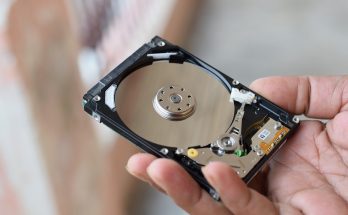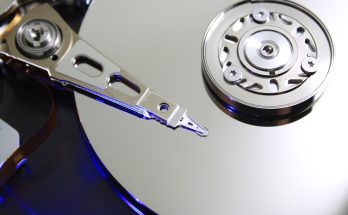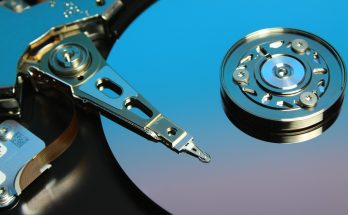Imagine your company losing access to critical data every 15 minutes. This is what Greenplum found in their tests of large-scale data warehouses. It shows how big a problem data integrity issues are in today’s tech.
Software corruption means unintended changes to computer data. It can really hurt your business. It causes downtime, loses important info, and makes clients lose trust.
It’s key to know why software corruption happens. We must also prevent it and learn how to fix it. A good data management plan is all about these things.
Understanding Software Corruption and Its Impact
Software corruption is a big problem for businesses of all sizes. It can cause serious issues, like physical damage to storage or errors in software. Each type of corruption has its own challenges.
Types of Data Corruption
Data corruption falls into two main types: physical and logical. Physical corruption happens when storage media gets damaged, like hard drives.
This is often due to hardware failures or environmental issues. Logical corruption occurs when wrong data is written to the right place. This is usually because of software bugs, malware, or system crashes.
Signs of Corrupted Software
It’s important to know the signs of software corruption to fix it fast. Look out for system crashes, trouble opening files, and strange error messages. These signs can mean malware, bugs, or other issues that harm data.
The Business Impact of Software Corruption
Software corruption can really hurt businesses. It can lead to financial losses, damage to reputation, and problems with operations. It also raises concerns about data safety.
Studies show big data warehouses face corruption issues every 15 minutes. Even huge amounts of data can get corrupted over time. If businesses don’t fix corruption, they might struggle to keep running smoothly and keep customers happy.
Primary Sources of Software Corruption
Software corruption can come from many places. Each one can make data and systems unstable. Knowing the main causes helps us prevent problems.
Software failures due to bugs and glitches are a big issue. These errors can happen during making or using software. They can cause data loss, system crashes, and other problems.
Network problems during data transmission can also mess things up. They can make data incomplete or wrong.
Human mistakes, like accidental deletions or improper configurations, can also cause trouble. Cyber threats, like malware and ransomware attacks, can harm systems and steal data.
Hardware failures, improper shutdowns, and environmental issues can also lead to corruption. Bad network setups, power problems, and natural disasters can damage data and systems.
Errors in writing, editing, or transferring data can also cause problems. Failed or wrong software updates and insufficient disk space are other issues.
| Cause of Software Corruption | Frequency of Occurrence |
|---|---|
| Software failures due to bugs and glitches | 25% of reported data corruption problems |
| Network issues during data transmission | 42% of silent data corruption incidents |
| Human errors (accidental deletions, improper configurations) | 21% of data corruption incidents with imprecise error reports |
| Cybersecurity threats (malware, ransomware) | 12% false alarms raised by detection systems |
Software Corruption Prevention Strategies
Keeping your software safe from corruption is key to keeping your data and business running smoothly. By using smart prevention strategies, you can lower the chance of software corruption. This makes sure your important systems work well.
Regular Backup Solutions
Backing up your data often is a basic way to protect against corruption. Create a strong backup plan with both on-site and off-site backups. This way, you can quickly get back to normal if corruption happens. Cloud-based backup solutions offer extra security and ease.
Data Validation Techniques
Using data validation methods can catch and stop corruption early. Use Cyclic Redundancy Check (CRC) to check your data’s integrity. Also, use data immutability to keep important info safe from changes without your okay.
System Monitoring Tools
Use system monitoring tools, like S.M.A.R.T. (Self-Monitoring, Analysis, and Reporting Technology) diagnostics, to find problems early. These tools spot hardware issues that could lead to software corruption. They help you fix problems before they cause big damage.
By using these strategies, you can protect your data and keep your software systems reliable. Regular security checks and updates help even more. They keep your business apps safe and working well for a long time.
Best Practices for Data Integrity
Keeping your data safe is key for your business’s success. You can use strong backup plans and check data for errors. These steps help protect your data and keep it safe.
Start by making a good backup plan. Use drives, cloud services, and storage places off-site. It’s important to test these backups often. This makes sure they work right and can be used when needed.
Checking your data for errors is also vital. Clean your data often to find and fix mistakes. This helps find and fix problems before they get worse.
- Watch your network gear to find and fix hardware issues that could harm your data.
- Put a UPS in your server rooms to keep systems safe from power problems.
- Use antivirus and anti-malware to fight cyber threats that could harm your data.
Teach your team how to handle data safely. Teach them about security and how to report data problems. This makes your team more careful and helps keep your data safe.
Recovery Methods for Corrupted Software
Dealing with corrupted software can be tough. It’s key to have a plan to get your data back. You can use data recovery tools, try different methods, or get help from experts.
Data Recovery Tools and Techniques
Start by using special data recovery tools. Tools like Recoverit Data Recovery can scan your system. They help find and fix corrupted files.
Techniques like file repair and disk imaging can also help. They can even get data back from damaged storage.
Professional Recovery Services
For serious cases, get help from data recovery pros. Companies like Fields Data Recovery can fix many problems. They work on hard drives, SSDs, and more.
Emergency Response Protocols
Having a plan for emergencies is important. It should cover how to restore data and when to call experts. This way, you can quickly deal with data breaches and cyber attacks.
Conclusion
Software corruption is a big threat to data safety and business work. Knowing why it happens helps us protect our data. This includes problems like hardware failures, human mistakes, cyberattacks, and data decay.
To keep your data safe, use backups, check data often, and watch your systems closely. Also, teach your team about data safety. Having plans for when things go wrong helps your business recover fast.
Keeping your data safe is very important for any business. Losing data can cause big problems, like money loss and damage to your reputation. By being careful and following best practices, your business can stay strong and ready for any challenges.
FAQ
What is software corruption and how can it impact my organization?
Software corruption happens when computer data gets changed in ways it shouldn’t. This can really hurt your business. It might cause your systems to crash, lose important data, and make clients lose trust.
What are the different types of data corruption?
There are two main types. Physical corruption is when the storage medium gets damaged. Logical corruption is when wrong data is written to the right place because of software problems or crashes.
How can I identify signs of corrupted software?
Look out for system crashes without reason, trouble opening files, and strange error messages.
What are the common causes of software corruption?
Many things can cause software corruption. Bugs and glitches in software, network problems, and human mistakes are common. Cyber threats like malware and ransomware can also cause issues. Plus, hardware failures, wrong shutdowns, and environmental problems can lead to corruption too.
How can I prevent software corruption in my organization?
To prevent corruption, make regular backups of important data. Use good hardware and keep everything updated. Also, use RAID setups and data validation routines. These steps can help keep your data safe.
What are the best practices for maintaining data integrity?
To keep data safe, use multiple backup systems and test them often. Clean your data regularly to find and fix errors. Make sure your network equipment is healthy and use antivirus tools. Teaching your team about data safety is also key.
How can I recover from software corruption incidents?
To fix corruption, use tools like file repair software and disk imaging. For serious cases, get help from experts. Make sure you have a plan for emergencies to help fix problems fast.



